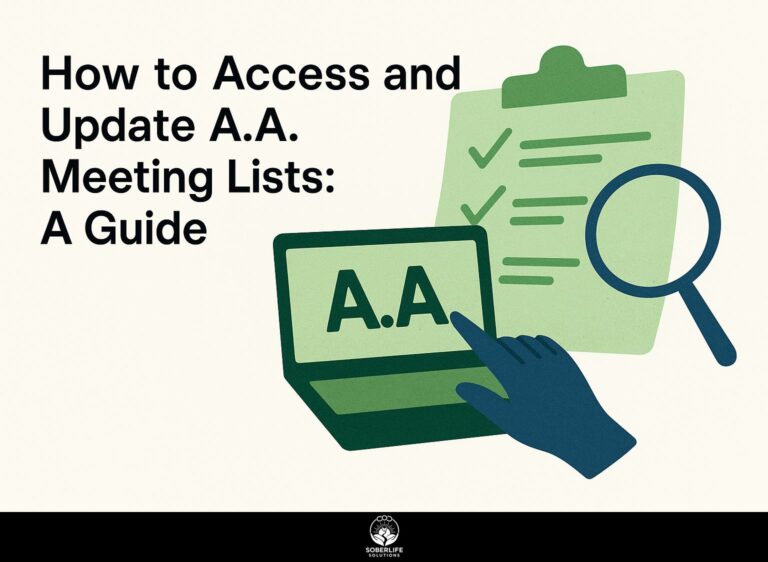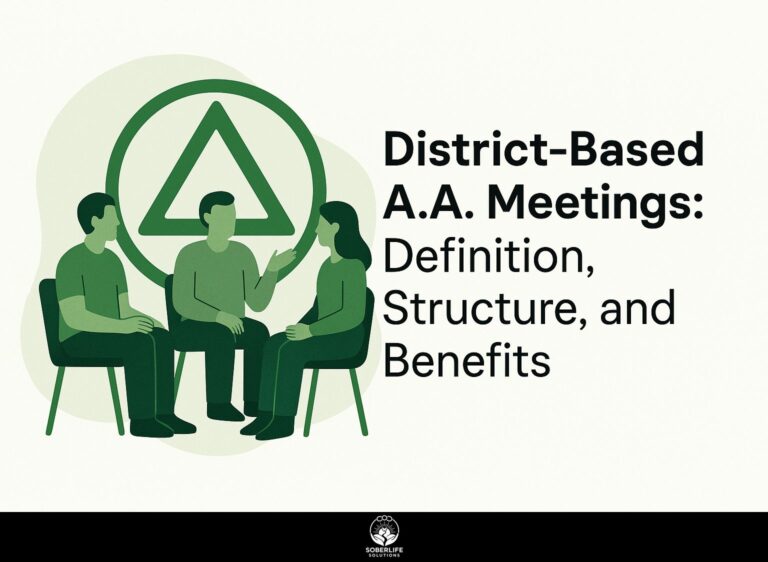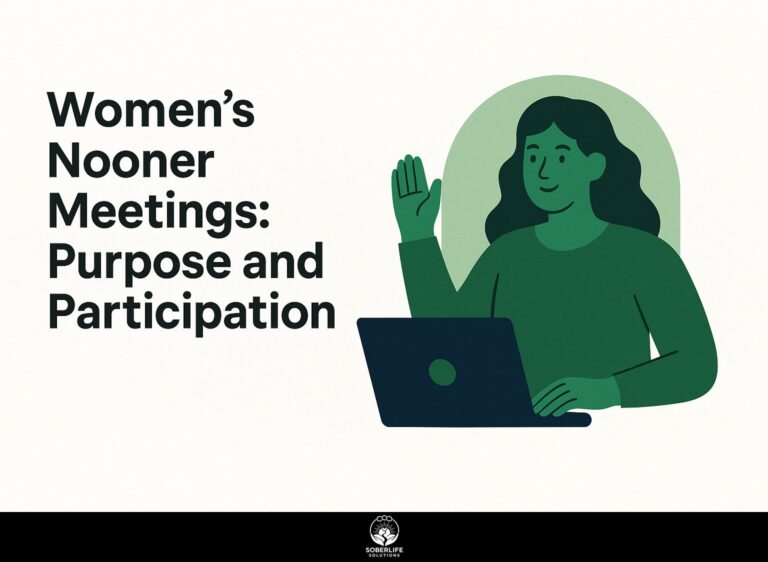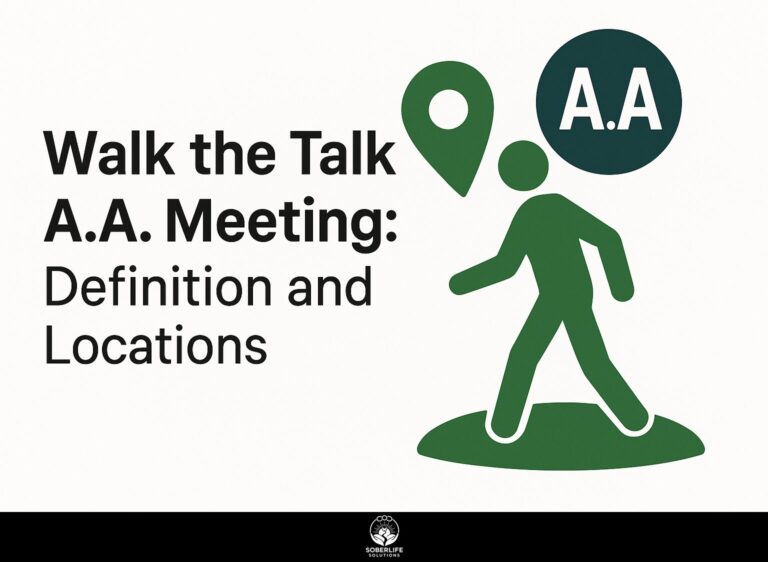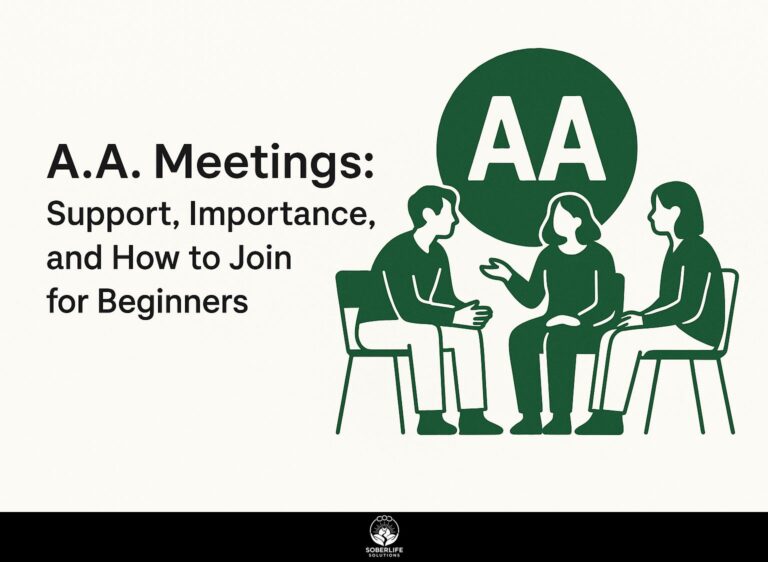How to Register a New A.A. Group: Requirements and Steps

Starting a new AA group can change lives by giving key support to people recovering from alcoholism. Guided by the AA General Service Office (GSO) and A.A. World Services Inc., official registration ensures your group aligns with A.A.’s trusted structure. This guide breaks down key requirements, simple steps, and pro tips to launch and sustain your new group effectively.
Key Takeaways:
Understanding A.A. Group Registration
A.A. group registration connects your new group to the broader fellowship, enabling access to meeting lists that serve over 2 million members across U.S. and Canada, as outlined by the AA General Service Office in New York NY.
This registration is an important part of A.A.’s service structure. It follows Tradition Three, which gives each group the right to make its own choices while keeping all groups connected through their own decision to join.
The General Service Office (GSO), accessible via aa.org, provides light oversight, coordinating resources without controlling local efforts.
Key benefits include listing in national directories on aa.org, making meetings discoverable to newcomers, and receiving literature, guidelines, and support from A.A. World Services Inc.
Such connectivity fosters sobriety by connecting isolated sufferers to a supportive network, as evidenced by GSO reports showing registered groups sustain higher attendance and recovery rates, ultimately aiding the alcoholic in sustained recovery through shared experience.
Basic Requirements for a New Group

To start a new Alcoholics Anonymous group, follow the basic rules in Tradition Three. This means the group helps people who want to stop drinking, and it has no official ties outside the AA community.
Eligibility Criteria
Under Tradition Three, any two or more alcoholics gathered for sobriety qualify as an AA group, with no affiliation to outside issues required, as affirmed in AA guidelines from the General Service Office.
To form such a group, meet these five key criteria, as outlined in the AA pamphlet ‘A.A. Tradition How It Works’:
- Minimum two members focused on recovery-for example, Hamilton, Ontario’s We Agnostics began with three dedicated individuals.
- Commitment to AA’s Twelve Traditions without mandating politics or religion.
- Regular meetings, whether in the U.S./Canada or abroad, supported by the General Service Office (GSO).
- No fees beyond voluntary contributions to cover essentials like rent.
- Sole requirement: a desire for sobriety among members.
A common mistake is assuming formal bylaws are needed; simplicity ensures accessibility and adherence to AA’s spirit.
Meeting Format Standards
AA meeting formats must adhere to a regular schedule and use approved A.A. literature, allowing flexibility for secular options like the We Agnostics approach adopted in many groups since 1941.
Standard formats provide actionable setups for effective meetings. According to GSO’s ‘Guidelines on Meeting Formats’:
- Open discussion (60-90 minutes): Start with the Serenity Prayer, then reference Big Book pages 83-88 for step work discussions among all attendees.
- Closed speaker meetings: Use the 12 Steps agenda for members-only sharing; avoid outside literature to maintain focus on personal experiences.
- Secular formats (e.g., We Agnostics): Read an alternative ‘How It Works’ without God references, fostering inclusive dialogue.
- Big Book study: Hold weekly page-by-page reviews from Chapter 5, using guided questions for analysis.
For instance, Hamilton, Ontario’s Thursday meetings began this secular approach on February 4, 2016, boosting attendance by 20% per local reports.
Preparing Your Group

Effective preparation for a new AA group involves choosing a distinctive name, secure location, and core members, mirroring the setup of Hamilton Ontario’s We Agnostics group at First Unitarian Church.
Selecting a Name and Location
Choose a name like ‘Hamilton We Agnostics’ following AA’s format of location plus type, and secure a spot such as First Unitarian Church in Hamilton Ontario, ensuring accessibility for alcoholics.
To launch your group effectively, follow these numbered steps:
- Brainstorm the name: Include ‘AA’ optionally but avoid affiliations; for example, ‘We Agnostics Monday Meeting’ keeps it secular and inviting, per aa.org’s group naming guidelines which emphasize inclusivity to prevent limiting attendance.
- Scout locations: Prioritize rent-free church basements, like First Unitarian’s setup starting September 10, 2018, for easy access and low cost.
- Arrange essentials: Get a coffee pot from your local intergroup for $20-50 to make the space feel welcoming.
- Check schedules: Set up weekly meetings that do not clash with those of nearby groups for easy running.
This process typically takes 2-4 weeks. Do not use names that are too narrow, as they could turn away non-religious AA members who want help without religious elements.
Gathering Initial Members
Build your core with 5-10 committed alcoholics by leveraging local intergroup contacts and word-of-mouth, as done successfully in Hamilton Ontario’s early We Agnostics gatherings.
Follow these four steps for a strong start:
- Reach out via AA Intergroup: Email your local contact for guidance, like [email protected], to connect with potential members and access resources.
- Publicize informally: Create simple posters for meeting venues and spread the word at existing groups, emphasizing Tradition Three’s focus on alcoholics only.
- Host preview meetings Hold two or three meetings to talk about what the group does, going over Tradition Three so everyone agrees.
- Confirm commitment: Require a pledge for regular attendance to build dedication.
A GSO study shows groups starting with 7+ committed members endure 5+ years; research from Live Science further highlights how social group activities can promote longer, healthier lives, reinforcing the value of dedicated participation in AA to meet membership requirements and avoid recruiting non-alcoholics.
Step-by-Step Registration Process

The registration process links your new group to the AA service structure, starting with local intergroup contact and culminating in GSO listing, which enhances discoverability in resources like the OIAA Meeting Directory (typically completed in 4-6 weeks).
Contacting the Local Intergroup
Begin by emailing or calling your local AA Intergroup, such as Hamilton’s office, where contacts like Roger C can guide new groups through initial inquiries.
To connect effectively, follow these numbered steps based on AA’s service structure outlined in the GSO Handbook (see FAQ section on new groups at aa.org).
- Find contact details on aa.org or your intergroup site; for Hamilton, call 905-549-4896.
- Prepare a concise pitch: describe your group’s name, meeting format (e.g., in-person or hybrid), and at least 5 committed members.
- Schedule a 15-30 minute call and request the New Group Form to formalize your setup.
- Follow up via email if no response in 48 hours.
This process typically takes 1 week. Avoid the common mistake of skipping district committee input, as it ensures proper integration per AA’s Twelve Traditions.
Completing the Group Registration Form
Complete the official New Group Form from GSO. Include details such as the meeting location and schedule.
This will place your group on the national meeting lists on aa.org.
Begin by downloading the form from aa.org or requesting it via Box 459, New York, NY 10163.
Follow these steps for completion:
- Enter basic details including group name, location (e.g., ‘Community Center, 123 Main St.’), and start date (e.g., February 4, 2016).
- Specify meeting format, such as secular AA, open/closed status, and schedule (e.g., Thursdays at 7 PM).
- Provide contact info like a group email or phone.
- Sign the form and submit to GSO or your local intergroup.
The process typically takes 1-2 hours. Avoid pitfalls like incomplete contact details, which can delay listing by months, per A.A. World Services Inc. policy.
Appointing Key Roles

Appointing roles like GSR integrates your new group into AA’s service structure, facilitating communication with district and area committees for ongoing support. To enhance this connection for online groups, implement the steps outlined in our guide to joining OIAA and its membership benefits.
Group Service Representative (GSR)
- Elect a GSR within the first month, responsible for voicing your group’s needs at district meetings, as required by AA’s inverted pyramid service structure.
-
Check that candidates have at least one year of sobriety and select them through a group conscience vote. This prevents quick appointments that lead to turnover, as stated in the ‘A.A. Guidelines for GSRs’ from the AA General Service Office.
-
Key responsibilities include attending monthly district committee meetings and reporting back on agenda items like literature needs or event planning.
-
For training, obtain the GSR kit from GSO through your local intergroup for $10-15; it covers service basics in a 2-hour review session.
-
Terms typically last two years, allowing rotation to maintain fresh perspectives and group involvement.
Post-Registration Obligations
After registration, maintain obligations like updating meeting lists annually and sourcing A.A. literature from GSO to sustain your group’s regular schedule and outreach.
According to General Service Office (GSO) reports, 80% of registered groups contribute to the 7th Tradition annually, ensuring financial stability.
Key obligations include:
- Update contact info yearly by emailing GSO at [email protected].
- Buy literature, such as the Big Book at $8 each, via the GSO handbook supply catalog.
- Publicize meetings through intergroup with posters costing about $5.
- Rotate coffee pot duties among members to share responsibilities.
- Cooperate with neighboring groups for shared events or support.
- Report changes, like shifting meetings to Mondays, to GSO promptly.
Proper upkeep yields ROI: Hamilton Group’s attendance grew by 20-30 members from 2016-2018 through consistent maintenance.
Tips for Success and Common Pitfalls
New groups in Hamilton Ontario, like We Agnostics starting September 10 2018, thrived by following these tips, avoiding pitfalls that dissolve 30% of starters within a year per GSO data.
Overcome common obstacles with these strategies:
- Low turnout Increase attendance with targeted publicity such as FAQ emails; the Hamilton group went from 4 to 15 members this way.
- Format disputes Use the secular Hamilton We Agnostics Meeting Format for AA meetings that welcome people regardless of religion.
- Funding shortages: Implement 7th Tradition baskets, targeting $50 per meeting for literature and rent.
- Role burnout: Rotate General Service Representatives (GSR) annually to share leadership.
- Policy oversights: Strictly follow the content use policy on aa.org to maintain compliance.
Roger C’s intergroup guidance says, “Best luck to your new group.” For more details, read the Tradition Three study from A.A. World Services Inc.
Frequently Asked Questions
What are the requirements for registering a new A.A. group under ‘How to Register a New A.A. Group: Requirements and Steps’?
To register a new A.A. group, you need at least two members committed to regularly holding meetings focused on the Twelve Steps and Twelve Traditions of Alcoholics Anonymous. The group must be self-supporting and autonomous, without affiliation to outside issues. Choose a meeting place that everyone can reach and follows A.A. rules for anonymity and allowing all to participate.
How do I begin the process outlined in ‘How to Register a New A.A. Group: Requirements and Steps’?
Start by gathering interested members and selecting a meeting format, time, and location. Talk about what the group is for to check that it matches A.A. principles. Then, contact your local A.A. Central Office or Intergroup for guidance, or directly reach out to the General Service Office (GSO) to obtain the Group Registration Form.
What information is needed for the registration form in ‘How to Register a New A.A. Group: Requirements and Steps’?
The registration form requires details such as the group’s name, meeting location and schedule, contact information for the group secretary or trusted servant, and a description of the meeting type (open, closed, etc.). Include how the group plans to contribute to the Seventh Tradition and any local service structure affiliations.
Are there any fees involved in ‘How to Register a New A.A. Group: Requirements and Steps’?
No, there are no fees to register a new A.A. group. A.A. is self-supporting through voluntary contributions from members, and registration with the GSO is free. The focus is on service and unity, not financial obligations.
How long does the registration take according to ‘How to Register a New A.A. Group: Requirements and Steps’?
Once the completed form is submitted to the GSO, registration typically takes 4-6 weeks for processing and confirmation. You can start holding meetings immediately after deciding on the basics; formal registration simply connects your group to the broader A.A. service structure.
What happens after successful registration in ‘How to Register a New A.A. Group: Requirements and Steps’?
After registration, your group will receive a Group Handbook, access to GSO resources, and a listing in the official A.A. meeting directory. You’ll be encouraged to elect officers, establish a group conscience, and participate in local district or area meetings to stay connected to the A.A. fellowship.


